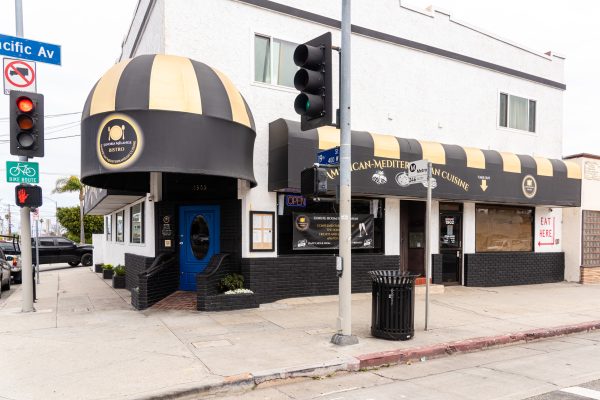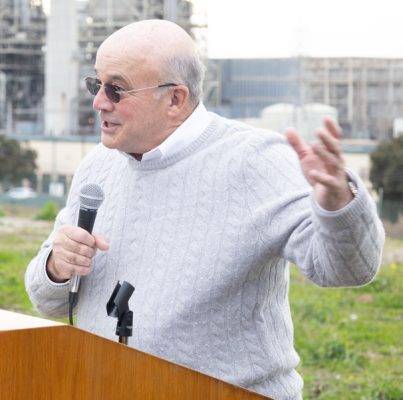by Mark McDermott
The emergency discharge of over 17 million gallons of untreated sewage on July 11, the lack of public notification regarding the spill, and ongoing operational problems at the Hyperion Water Reclamation Plant in El Segundo have come under fire from Congressman Ted Lieu and Los Angeles County Supervisor Janice Hahn.
Lieu on Tuesday called for a federal investigation into the matter. In a letter to the heads of the Environmental Protection Agency and the National Oceanic and Atmospheric Administration, Lieu expressed concern that more than two weeks after the spill, Hyperion is still releasing partially treated sewage into the ocean “seemingly in gross violation” of state and federal laws.
“As the facility typically processes 260 million gallons of treated wastewater into the ocean daily, this continued discharge of partially treated wastewater into the ocean is deeply concerning to the health of beachgoers and the safety of our coastal communities,” Lieu wrote. “Given the severity of this incident, the egregious delay in notifying local officials of the event, the continued discharge of wastewater into the Pacific Ocean, and the impact not only to nearby communities but also the local ecosystem, I urge EPA and NOAA to investigate this incident.”
Hahn and her fellow supervisors ordered an investigation immediately after the spill. At its July 27 meeting, the Supervisors received a report on the incident. Hyperion is operated by the City of Los Angeles, but the lag in time from the spill, which occurred on a Sunday night, and beach closures, which occurred the following Monday afternoon, drew Hahn’s ire. She noted that LA County Public Health inspectors were at the plant Sunday night and saw the disaster happening in real time.
“I’ve heard from surfers who were in the water at Dockweiler in El Segundo that [Monday morning] that should not have been,” Hahn said at the meeting. “I’ve heard from parents whose children were at a swim camp that morning, and spent the day in what could have been harmful conditions… and I do say ‘could’ because we did get lucky this time — the ocean water samples that Public Health has tested since the spill have come back within normal levels.”
Barbara Ferrer, director of Los Angeles County Department of Public Health, told the Board of Supervisors that the organization’s on-call system left lower-level officials in unaccustomed positions of authority. Going forward, the department’s four branch directors will be on call.
“I want to start by apologizing, both to the Board and to the public for our failures at the Department of Public Health in responding appropriately to the really disastrous incident,” Ferrer said. “There aren’t any excuses. There were multiple failures. Most of them have already been fixed…. We’ve never had an incident, frankly, of this magnitude in the county, and we didn’t have the right operating procedures that would insist that this get elevated.”
The report delivered to the Board of Supervisors, conducted by the same firm that investigated the Woolsey Fire, CityGate, said that part of the problem was the person the county inspectors reported to was ill on Monday morning. But Ferrer said this was not an excuse for the five hours it took from the start of the business day Monday to close the beaches at 1 p.m.
“The [Public Health] strike team should not have left without reaching out to one of our branch directors, which means that it would automatically have been raised at the daily early morning meeting,” she said. “So again, we didn’t have the right redundancy built in, and we also didn’t have the right people notified of an environmental disaster.”
In an interview, Hahn expressed concern beyond the poor communications surrounding the spill. She said Hyperion had yet to provide a satisfactory explanation for how exactly the spill occurred, and specifically how it was possible that debris in the inflow could have caused the disaster.
“We still need answers from Hyperion about why the plant was overwhelmed with debris in the first place,” Hahn said. “That amount of incoming debris during dry weather is unprecedented. If they can’t identify the cause, then they can’t make a plan to prevent it from happening again.”
The CityGate report includes a somewhat ominous passage describing the onset of problems at the Hyperion plant Sunday night.
“On Sunday, July 11, at approximately 2:00 p.m. in the afternoon, on an otherwise normal summer day without excessive sewage inflows, the Plant began to receive a very high volume of large trash pieces,” the report says. “The mechanical headwaters intake screens use mechanical rakes to remove normal debris allowing treatable materials into the facility. The large trash flow began to overwhelm the screens and trash clearing tools. As clearing the debris became more and more difficult, Plant executive staff were called to the site. By later afternoon the debris flow had completely overwhelmed the headwaters building, requiring evacuation of personnel due to increasing life-threatening circumstances.”
Elena Stern, a spokesperson for the the City of Los Angeles Sanitation and Environment Department, said that exactly what the debris was is still under investigation.
“This is very much a work in progress,” Stern said. “Our first priority, when this first happened, was to ensure the public health and safety of our employees and residents nearby, and the beach. And so the first priority was that we are in cleanup mode, or in recovery mode. Now we’re investigating. We’re going to bring in third party consultants to help us understand what happened. This is a sewage plant, and so that kind of debris hitting us one sunny day in the summer is very unusual. We just still don’t know the cause of it. We’re looking at conveyance lines, we are looking at sewer lines. We’ve got 6,700 mile lines of a sewer, so it’s not going to be a report back in a week. It’s going to be an arduous investigation, because we don’t want this to ever happen again.”
Stern praised the response from the workers at the plant. The day of the incident, the plant was forced to use an emergency one mile outflow pipe, rather than it’s usual five mile outflow. But that decision, Stern said, prevented a much larger disaster from occurring.
“We did a yeoman’s job,” she said. “The people working there really saved the day. A 17 million gallon discharge is significant, but when you consider that we take 260 million gallons in every day, if we hadn’t discharged, the whole plant could have shut down. And that would have been very bad.”
El Segundo residents are still coping with the fallout, particularly a lingering odor due to the fact that the Hyperion plant is still not fully operational. The City of Los Angeles has paid for air conditioning and in some cases temporarily relocation for nearby residents. Mayor Drew Boyles said the City is doing its best to hasten the process of repair.
“We share the frustrations of our residents and are bringing every federal, state, local, and media agency to bear to speed up repairs and resolution,” Boyles said.
Stern took issue with Congressman Lieu’s assertion that partially treated wastewater is still being discharged. She said it’s not that simple.
“Let me put it into context,” Stern said. “After we discharged the untreated sewage, we were able to get back online and start pumping out through the five mile outfall, which is what we normally do, and the water was being treated again. What’s happened in the days since then is that because there’s so much sludge and so much wastewater that still remained on the property — half our entire facility was flooded, and one building was three stories underwater — because we had to remove those materials, the water quality started to worsen. So the water is still going through the entire process of treatment, but because the efficiency of the plant itself has been compromised, then that is what is going out to the ocean five miles away. It’s not really partial [treatment]. It’s complicated to explain, but because so much of our equipment was damaged, it’s not at a level of quality that we want and expect it to be. But that’s going to be short term.”
The bacterial levels that caused warnings at beaches earlier this week, Stern said, are unrelated to the spill, which was confirmed through testing conducted by the Department of Public Health. Stern said surfers can safely go into the waters at Dockweiler.
“Unless you are surfing five miles out,” she said. “And that’s not surfing. That’s paddleboarding.” ER










